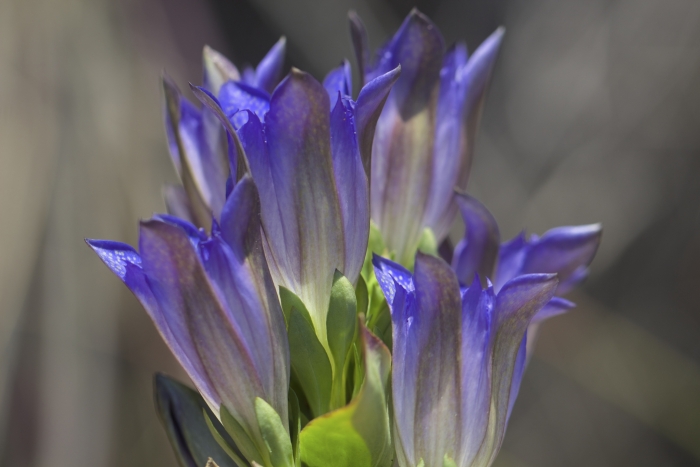Pleated Gentian
(Gentiana affinis)
Pleated Gentian (Gentiana affinis)
/
/

icosahedron
CC BY 4.0
Image By:
icosahedron
Recorded By:
Copyright:
CC BY 4.0
Copyright Notice:
Photo by: icosahedron | License Type: CC BY 4.0 | License URL: http://creativecommons.org/licenses/by/4.0/ | Rights Holder: icosahedron | Publisher: iNaturalist | Date Created: 2018-07-30T13:17:05-07:00 |























Estimated Native Range
Summary
Gentiana affinis, commonly known as Pleated Gentian, is a perennial herb native to moist meadows, prairies, and subalpine zones across the Western United States, from California to Montana and south to New Mexico. It is also found in parts of Canada. This species typically grows 10-30 cm tall and forms clumps of upright stems. The leaves are lance-shaped and arranged oppositely on the stem. Pleated Gentian is particularly noted for its striking, trumpet-shaped, deep blue to violet flowers that bloom in late summer and early autumn, adding a splash of color to the landscape when many other flowers have finished blooming.
The flowers of Pleated Gentian are highly showy and make it a desirable addition to wildflower gardens, rock gardens, and borders, especially in naturalistic plantings. It is valued for its ornamental beauty and its ability to attract pollinators such as bees and butterflies. In cultivation, Pleated Gentian requires full sun to partial shade and thrives in well-drained, moist soil, resembling its native wetland and meadow habitats. While it is not a high-maintenance plant, it does benefit from consistent moisture and may not tolerate prolonged drought. It is not commonly afflicted by diseases or pests, but poor drainage can lead to root rot. There are no widely known popular garden cultivars of this species, and it is not typically invasive when grown outside its native range. However, gardeners should be aware that it may not compete well with more aggressive plants.CC BY-SA 4.0
The flowers of Pleated Gentian are highly showy and make it a desirable addition to wildflower gardens, rock gardens, and borders, especially in naturalistic plantings. It is valued for its ornamental beauty and its ability to attract pollinators such as bees and butterflies. In cultivation, Pleated Gentian requires full sun to partial shade and thrives in well-drained, moist soil, resembling its native wetland and meadow habitats. While it is not a high-maintenance plant, it does benefit from consistent moisture and may not tolerate prolonged drought. It is not commonly afflicted by diseases or pests, but poor drainage can lead to root rot. There are no widely known popular garden cultivars of this species, and it is not typically invasive when grown outside its native range. However, gardeners should be aware that it may not compete well with more aggressive plants.CC BY-SA 4.0
Plant Description
- Plant Type: Herb
- Height: 0.25-2.25 feet
- Width: 0.5-1 feet
- Growth Rate: Moderate
- Flower Color: Blue, White
- Flowering Season: Summer, Fall
- Leaf Retention: Deciduous
Growth Requirements
- Sun: Full Sun, Part Shade
- Water: Medium
- Drainage: Medium
Common Uses
Bee Garden, Butterfly Garden, Low Maintenance
Natural Habitat
Moist meadows, prairies, subalpine zones, and parts of Canada
Other Names
Common Names: Narrowleaf gentian, Rocky Mountain Gentian, Oblong-Leaved Gentian, Prairie Gentian, Fringed gentian
Scientific Names: , Gentiana affinis, Dasystephana affinis, Dasystephana bigelovii, Dasystephana bigelowii, Dasystephana forwoodii, Dasystephana interrupta, Dasystephana oregana, Dasystephana oxyloba, Dasystephana rusbyi
GBIF Accepted Name: